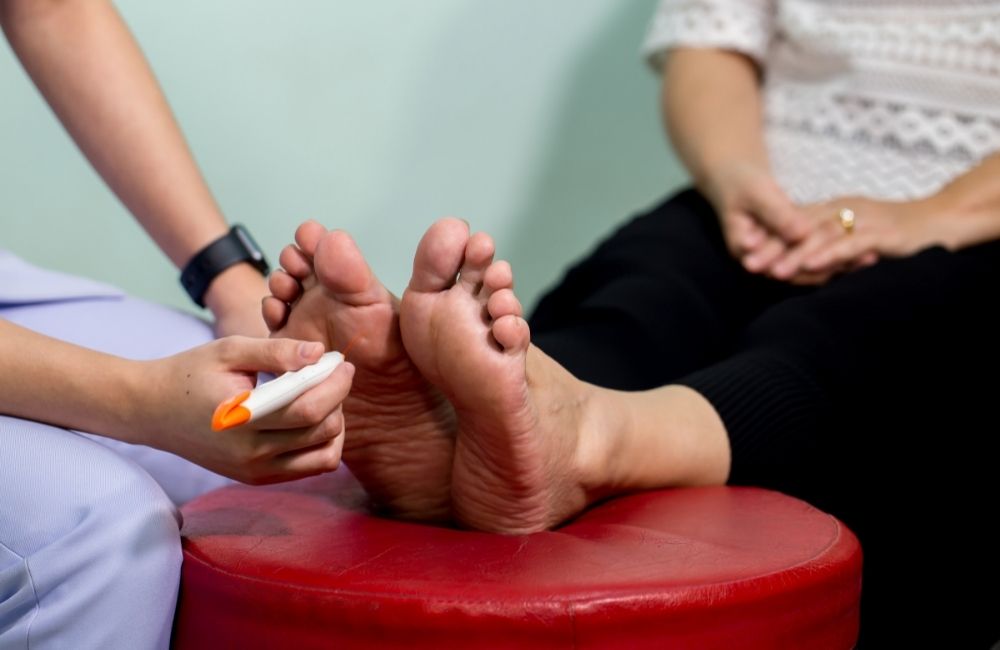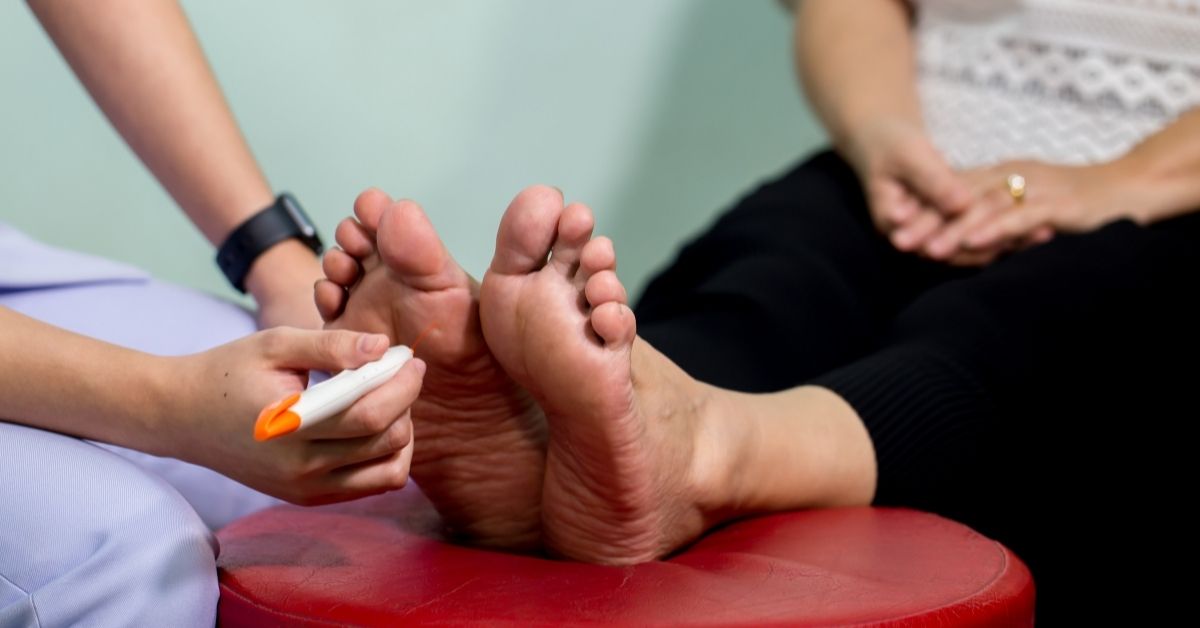One of the first places diabetes related complications show up is in the feet (it’s why diabetic foot health is so important!). After all, to reach your feet your blood and nerves have to travel much further than other parts of your body – it makes sense that there is more opportunity for things to go wrong! So we perform a regular diabetes foot health check.

Why do podiatrists need to do a diabetes foot health check?
Podiatrists play an important part in screening for foot health problems and keeping you well. A podiatrist should always be part of your diabetes health-care team. This team works together to monitor, maintain and improve your quality of life when living with diabetes.
Your GP will often refer you to a podiatrist for a diabetic foot assessment. Seeing a podiatrist regularly is recommended even without a referral. Foot assessments are especially important if you have been recently diagnosed with diabetes or have a history of previous complications.
What do we examine during your diabetes foot health check?
Your Podiatrist will carry out various tests to determine and monitor your foot health. These give us a good indication as to where you stand on the risk scale for diabetes related complications, such as developing non-healing wounds (ulcers) and risk of amputation.
Circulation
There are two main arteries that lead into the foot. We listen to these and check the quality of blood flow by using a diagnostic ultrasound machine called a Doppler.
Nerves
Different nerves are responsible for different things in our feet: light touch, temperature, pressure, vibration, reflexes…etc. It is important to see if there have been any changes in function as they form your main protective system from injury.
Muscle Power
Muscle strength can have an impact on your balance, and whether or not injury will occur when moving around and exercising.
Gait
We check for any abnormalities which may lead to increased risk of falling or injury.
Range of motion and structure of the foot
Restrictions in joint movement can lead to injury and or pain while loose ligaments and joints can also lead to being unstable and can result in injury.

How do we use the results?
Results of the foot assessment will give you a risk level of future complications (particularly foot ulceration), ranging from ‘Low’ to ‘Acute’. We use this to determine whether further intervention is needed, such as a detailed vascular or neurological assessment. We include these results in a report to your GP; it’s important for both you and your GP to know.
Even if you are at low risk, you will be given tailored information to help you protect and manage your feet at home safely. The podiatrist will also look at more general ways to improve your quality of life. For example, they may recommend treatments such as orthotics, a change in footwear or an exercise programme. If it would benefit you, they can initiate referrals to other allied health professionals such as exercise physiologists.
How often do I need a diabetes foot health check?
The regularity of these assessments depend on the results from the initial assessment. If everything is normal, we typically do the diabetes foot health check annually. If you are at a higher risk of complications, your podiatrist will advise you to return more frequently and work with you on a long-term management plan. Don’t forget, there’s plenty you can do to help manage your foot health at home, between appointments.


